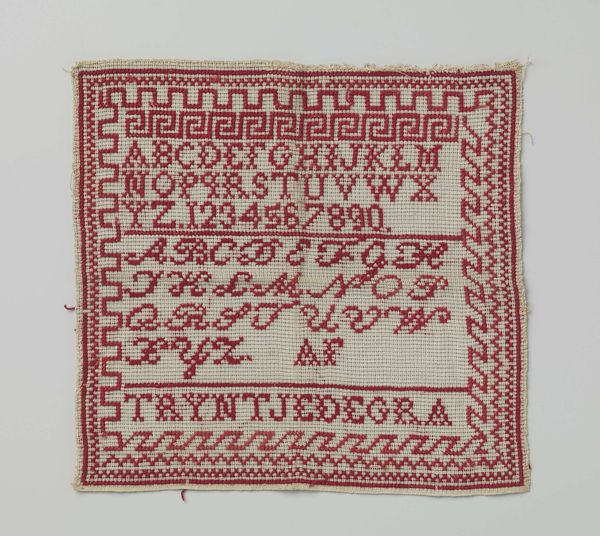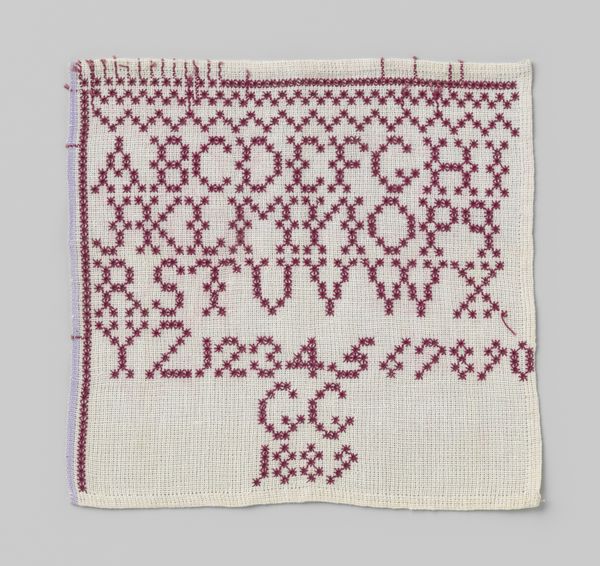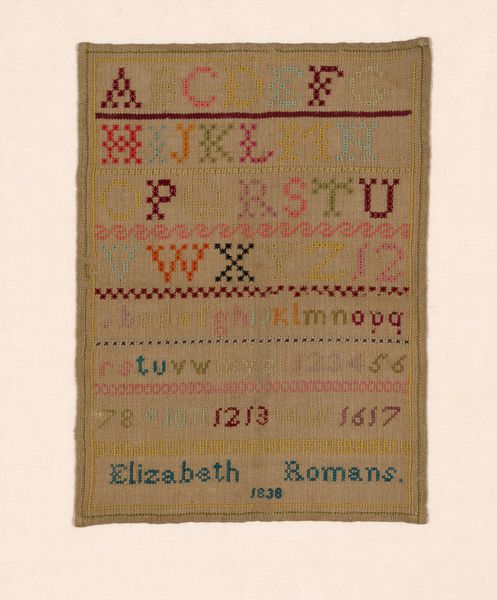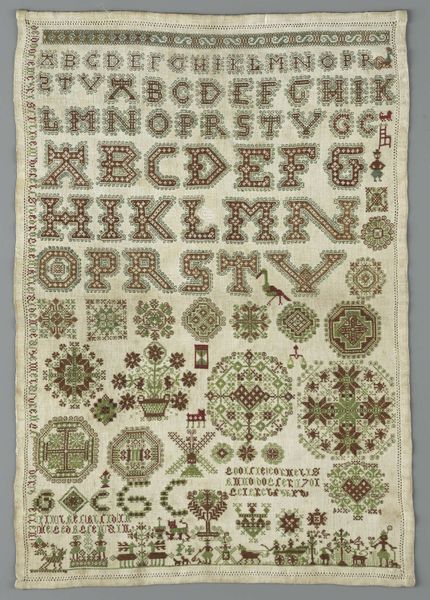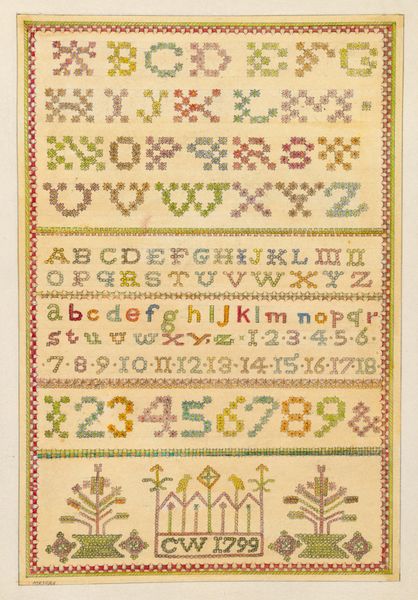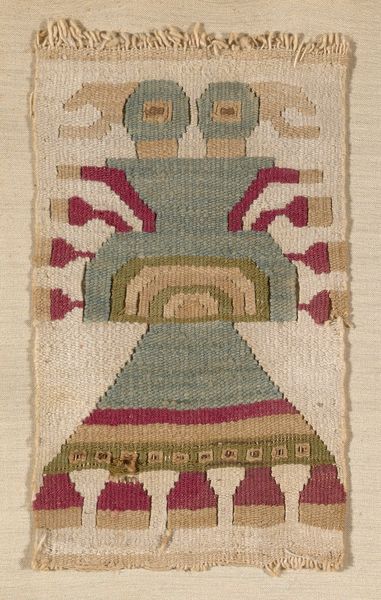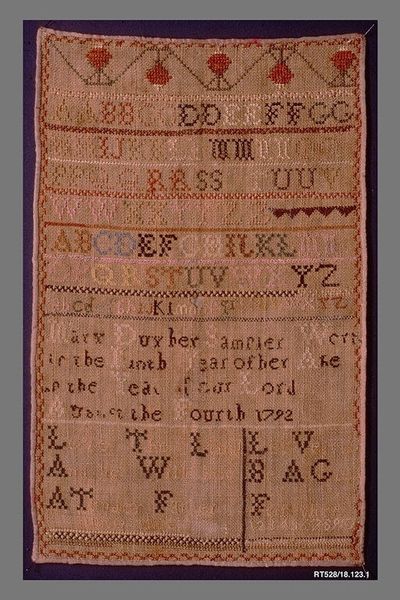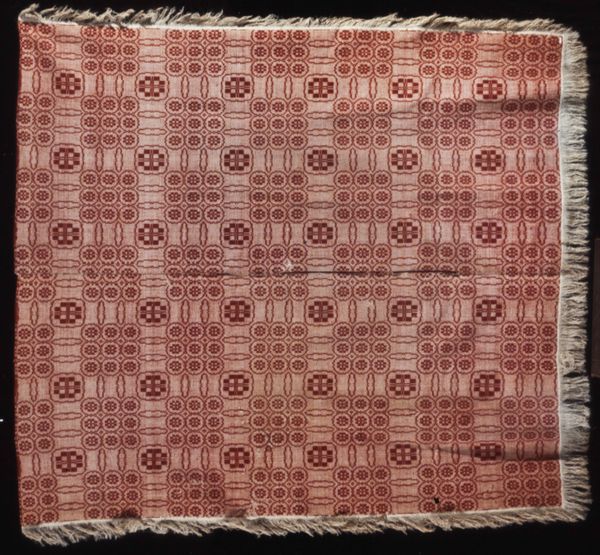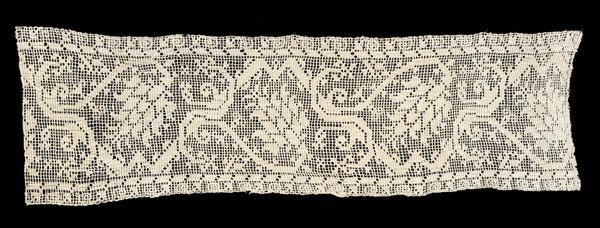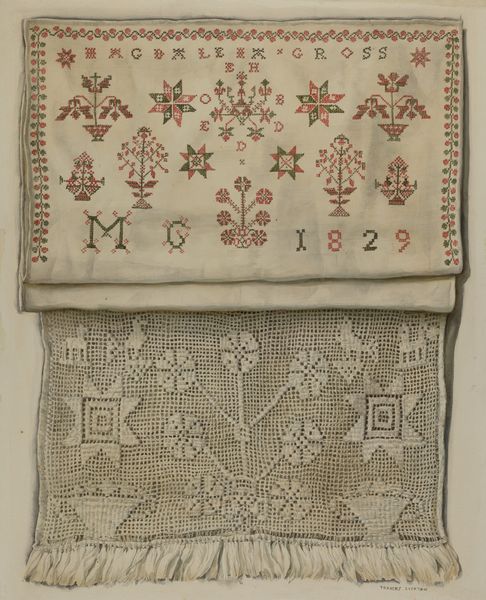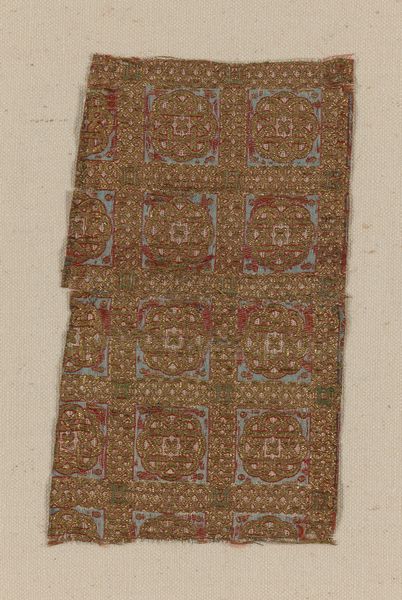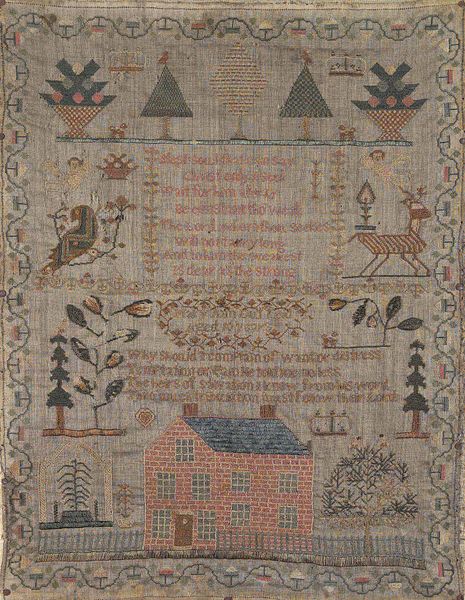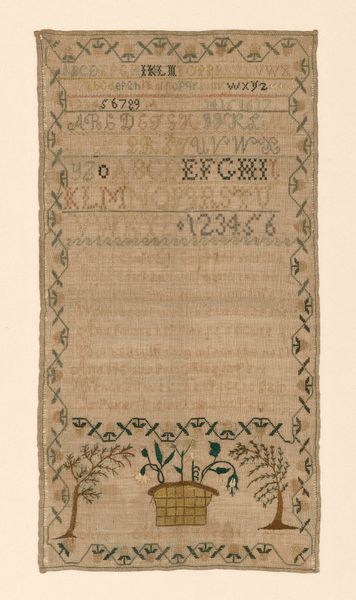
textile
#
folk-art
#
textile
#
folk-art
#
decorative-art
Dimensions: H. 3 1/2 x W. 3 1/8 inches (8.9 x 7.9 cm)
Copyright: Public Domain
Curator: What a beautifully haunting piece of embroidery! It's called "Sampler made at a charity school," dating back to 1853. Editor: It feels so fragile, doesn't it? The red thread against the faded linen… like faded memories stitched onto a small, humble canvas. There’s a real poignancy there. Curator: Absolutely. Samplers like these were common in schools, especially charity schools. They served a dual purpose: teaching needlework skills and instilling virtues. Notice the alphabet, the numerals, all rendered in neat, careful cross-stitch. Editor: Yes, it’s a visual language lesson. I am struck by the little motifs along the bottom, though. Are those teapots and stylized floral arrangements? They add such a domestic charm, juxtaposed with the educational rigor of the ABCs. The teapots make me imagine shared stories. Curator: They definitely humanize the piece, breaking up the rigidity. And symbols are very revealing. We have stylized trees of life and geometric borders to the lower sections, perhaps expressing growth and structured order – crucial virtues to learn. Also, a student’s name would add a unique personalized expression to their craft, a personal touch added at the end! Editor: And to consider the social context - children in charity schools would certainly learn such domestic skills as the sampler illustrates, essential tools to equip women for future work as servants. In that sense the embroidery symbolizes the constraints of societal expectation. Curator: A sharp contrast between instruction and personal flourish. Imagine spending countless hours stitching, trying to internalize lessons. Each cross-stitch holding stories and, perhaps, silent rebellions against constraint. Editor: It prompts us to reflect on the complex meanings that can reside in something seemingly simple. What’s more beautiful than art produced in educational facilities? Curator: Precisely. Looking closely reveals the layers—the overt didacticism and that subversive hint of individual spirit trying to breathe free through thread. Editor: Exactly!
Comments
No comments
Be the first to comment and join the conversation on the ultimate creative platform.
